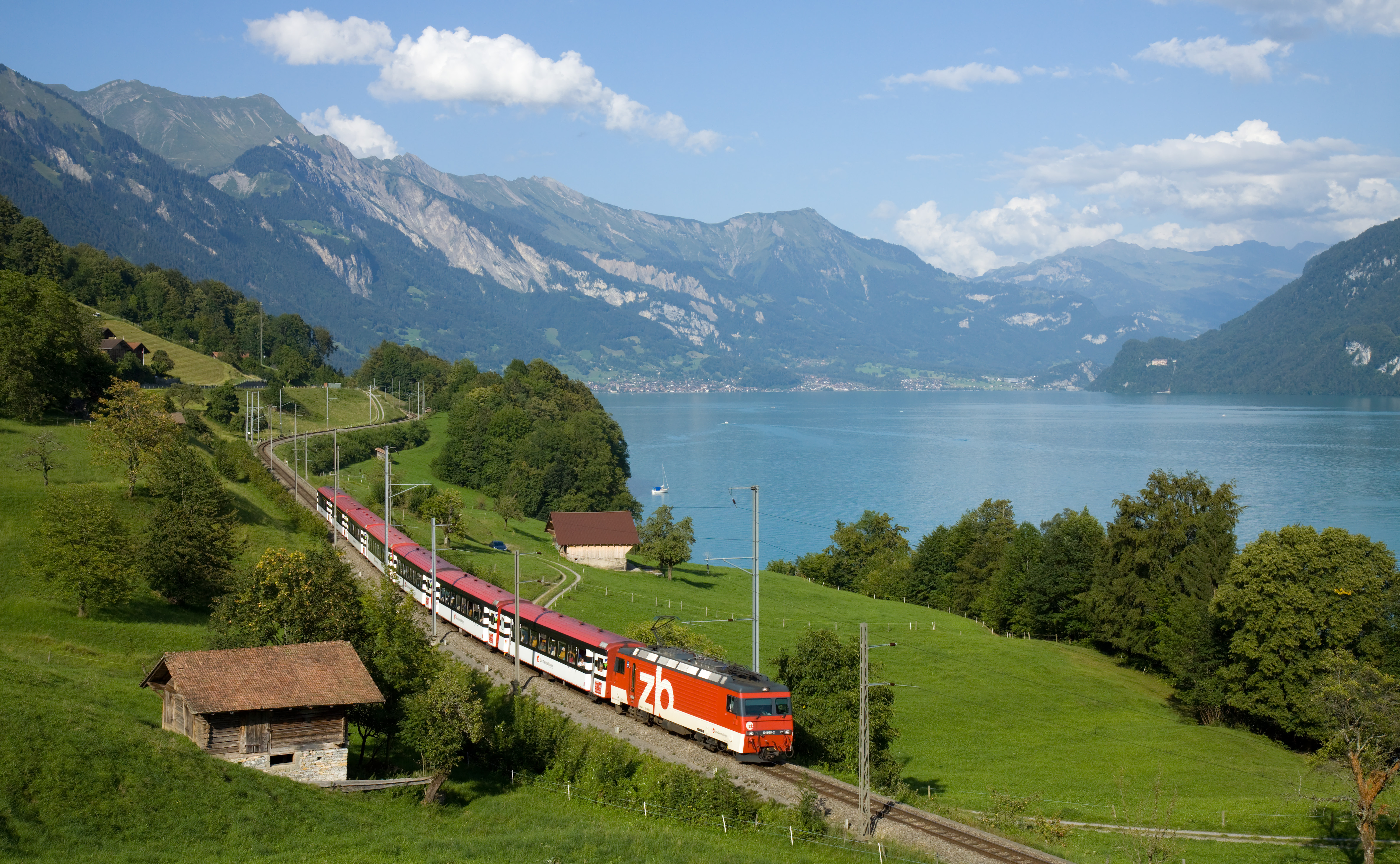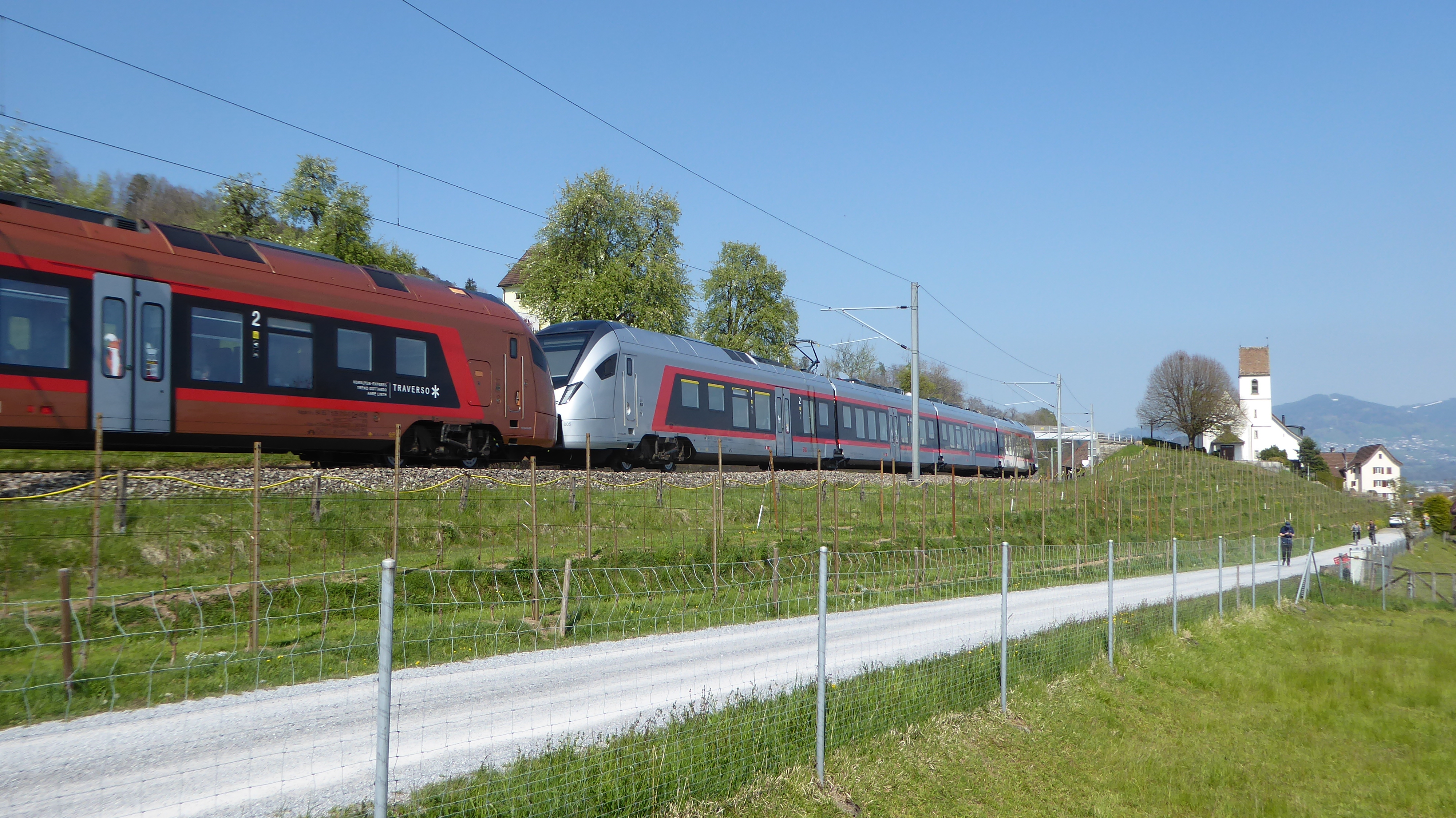|
S4 (Lucerne S-Bahn)
The Lucerne S-Bahn (german: S-Bahn Luzern) is an S-Bahn-style commuter rail network focusing on Lucerne, Switzerland. Opened on 12 December 2004, the network forms part of the Central Switzerland S-Bahn project (german: S-Bahn Zentralschweiz, links=no), which also includes the Zug Stadtbahn (german: Stadtbahn Zug, links=no). Lines , the network consisted of the following lines: See also *Trolleybuses in Lucerne References External links BLS– official site {{coord missing, Switzerland S-Bahn in Switzerland S-Bahn The S-Bahn is the name of hybrid urban- suburban rail systems serving a metropolitan region in German-speaking countries. Some of the larger S-Bahn systems provide service similar to rapid transit systems, while smaller ones often resemble co ... 2004 establishments in Switzerland ... [...More Info...] [...Related Items...] OR: [Wikipedia] [Google] [Baidu] |
Zentralbahn
The Zentralbahn is a Swiss railway company that owns and operates two connecting railway lines in Central Switzerland and the Bernese Oberland. It was created on January 1, 2005, with the acquisition of the independently owned Luzern–Stans–Engelberg line, and the Brünig line of the Swiss Federal Railways. The company has its headquarters in Stansstad. The railway owns the infrastructure of the long inter-regional Brünig line, which links Lucerne and Interlaken over the Brünig Pass, and the long Luzern–Stans–Engelberg line from Hergiswil, on the Brünig line some out of Lucerne, to Engelberg. Both lines are built to the , and use rack railway technology to climb their steepest gradients, although most of both lines uses conventional adhesion. The railway operates two hourly InterRegio express services, one between Lucerne and Interlaken, and one between Lucerne and Engelberg. It also operates two half-hourly services of the Lucerne S-Bahn, the S4 between L ... [...More Info...] [...Related Items...] OR: [Wikipedia] [Google] [Baidu] |
Lucerne Railway Station
Lucerne railway station (german: Bahnhof Luzern) is a major hub of the rail network of Switzerland, in the city of Lucerne in the canton of Lucerne. It is a terminal station serving domestic and international traffic on several rail lines, and is situated in a city centre and waterfront location on the south side of Lake Lucerne. History The first station was opened on edge of Lake Lucerne in 1856 at the end of the Schweizerische Centralbahn main line from Olten and Basel where it connected with the French and German railways. The route of the railway—now the course of Pilatusstrasse ( Pilatus Street)—was still undeveloped. The terminal station led directly to the pier for boat services on the lake and to the gates of the city of Lucerne. As a result, the area at the lake shore developed into an important railway junction. In the 19th century it rapidly developed into a hub with the introduction of steam navigation on the lake and the construction of several railway lines: the ... [...More Info...] [...Related Items...] OR: [Wikipedia] [Google] [Baidu] |
Lucerne
Lucerne ( , ; High Alemannic German, High Alemannic: ''Lozärn'') or Luzern ()Other languages: gsw, Lozärn, label=Lucerne German; it, Lucerna ; rm, Lucerna . is a city in central Switzerland, in the Languages of Switzerland, German-speaking portion of the country. Lucerne is the capital of the canton of Lucerne and part of the Lucerne (district), district of the same name. With a population of approximately 82,000 people, Lucerne is List of cities in Switzerland, the most populous city in Central Switzerland, and a nexus of economics, transportation, culture, and media in the region. The city's urban area consists of 19 municipalities and towns with an overall population of about 220,000 people. Owing to its location on the shores of Lake Lucerne (german: Vierwaldstättersee) and its outflow, the river Reuss (river), Reuss, within sight of the mounts Pilatus (mountain), Pilatus and Rigi in the Swiss Alps, Lucerne has long been a destination for tourists. One of the city's landm ... [...More Info...] [...Related Items...] OR: [Wikipedia] [Google] [Baidu] |
S-Bahn
The S-Bahn is the name of hybrid urban- suburban rail systems serving a metropolitan region in German-speaking countries. Some of the larger S-Bahn systems provide service similar to rapid transit systems, while smaller ones often resemble commuter or even regional rail. The term derives from ''Schnellbahn'', ''Stadtbahn'' or ''Stadtschnellbahn''. Similar systems in Switzerland are known as S-Bahn as well. In Belgium it is known as S-Trein (Flemish) or Train S (French). In Belgium there are S-Trains in the five largest cities: Brussels, Antwerp, Liège, Ghent and Charleroi. In Denmark, they are known as S-tog , in the Czech Republic as Esko or S-lines. Characteristics There is no complete definition of an S-Bahn system. S-Bahn are, where they exist, the most local type of railway stopping at all existing stations inside and around a city, while other mainline trains only call at major stations. They are slower than mainline railways but usually serve as fast crosstown se ... [...More Info...] [...Related Items...] OR: [Wikipedia] [Google] [Baidu] |
SBB CFF FFS
Swiss Federal Railways (german: link=no, Schweizerische Bundesbahnen, ''SBB''; french: link=no, Chemins de fer fédéraux suisses, ''CFF''; it, Ferrovie federali svizzere, ''FFS'') is the national railway company of Switzerland. It is usually referred to by the initials of its German, French, and Italian names, either as SBB CFF FFS, or used separately. The Romansh version of its name, ''Viafiers federalas svizras'', is not officially used. The official English abbreviation is "SBB", instead of the English acronym such as "SFR", which stands for ''Swiss Federal Railways'' itself. The company, founded in 1902, is headquartered in Bern. It used to be a government institution, but since 1999 it has been a special stock corporation whose shares are held by the Swiss Confederation and the Swiss cantons. It is currently the largest rail and transport company of Switzerland, and operates on most standard gauge lines of the Swiss network. It also heavily collaborates with ... [...More Info...] [...Related Items...] OR: [Wikipedia] [Google] [Baidu] |
Commuter Rail
Commuter rail, or suburban rail, is a passenger rail transport service that primarily operates within a metropolitan area, connecting commuters to a central city from adjacent suburbs or commuter towns. Generally commuter rail systems are considered heavy rail, using electrified or diesel trains. Distance charges or zone pricing may be used. The term can refer to systems with a wide variety of different features and service frequencies, but is often used in contrast to rapid transit or light rail. Similar non-English terms include ''Treno suburbano'' in Italian, ''Cercanías'' in Spanish, Aldiriak in Basque, Rodalia in Catalan/Valencian, Proximidades in Galician, ''Proastiakos'' in Greek, ''Train de banlieue'' in French, '' Banliyö treni '' in Turkish, ''Příměstský vlak'' or ''Esko'' in Czech, ''Elektrichka'' in Russian, ''Pociąg podmiejski '' in Polish and ''Pendeltåg'' in Swedish. Some services share similarities with both commuter rail and high-frequency rapid ... [...More Info...] [...Related Items...] OR: [Wikipedia] [Google] [Baidu] |
Zug Stadtbahn
The Zug Stadtbahn (german: Stadtbahn Zug) is an S-Bahn-style commuter rail network centred on Zug, Switzerland. Opened on 12 December 2004, the network forms part of the Central Switzerland S-Bahn project (german: S-Bahn Zentralschweiz, links=no), which also includes the Lucerne S-Bahn (german: S-Bahn Luzern, links=no). Lines , the network consisted of the following lines: * Baar–Zug–Cham–Rotkreuz–(Luzern) (also of the Lucerne S-Bahn) * Baar Lindenpark–Zug–Walchwil–Arth-Goldau–(Erstfeld) Reconstruction of the railway line on the east side of Lake Zug led to the suspension of the S2 between and beginning on June 9, 2019. S2 services from will operate to . S2 service was suspended altogether on 9 April 2020. Rolling stock The trains acquired by the SBB-CFF-FFS to operate the S1 services on the Zug Stadtbahn are SBB-CFF-FFS RABe 523 class electric multiple units. However, when the S1 was opened in 2004, there were not enough of these trains available to p ... [...More Info...] [...Related Items...] OR: [Wikipedia] [Google] [Baidu] |
Swiss Federal Railways
Swiss Federal Railways (german: link=no, Schweizerische Bundesbahnen, ''SBB''; french: link=no, Chemins de fer fédéraux suisses, ''CFF''; it, Ferrovie federali svizzere, ''FFS'') is the national railway company of Switzerland. It is usually referred to by the initials of its German, French, and Italian names, either as SBB CFF FFS, or used separately. The Romansh version of its name, ''Viafiers federalas svizras'', is not officially used. The official English abbreviation is "SBB", instead of the English acronym such as "SFR", which stands for ''Swiss Federal Railways'' itself. The company, founded in 1902, is headquartered in Bern. It used to be a government institution, but since 1999 it has been a special stock corporation whose shares are held by the Swiss Confederation and the Swiss cantons. It is currently the largest rail and transport company of Switzerland, and operates on most standard gauge lines of the Swiss network. It also heavily collaborates with ... [...More Info...] [...Related Items...] OR: [Wikipedia] [Google] [Baidu] |
Südostbahn
The Südostbahn (German, literally meaning "South-Eastern Railway") – commonly abbreviated to SOB – is a Swiss adhesion railway company, and a network in Central and Eastern Switzerland. It resulted from the merger of the original SOB with the Bodensee–Toggenburg railway (BT) at the end of 2001. The Schweizerische Südostbahn AG (Swiss South-Eastern Railway SA) is a small private railway jointly owned by the cantonal and federal governments as an Aktiengesellschaft (AG). Network The rail network of the Südostbahn (SOB) consists of that formerly owned by BT in northeast Switzerland (between Lake Constance and Toggenburg): * Romanshorn– St. Gallen St. Fiden line, * St. Gallen–Herisau–Degersheim–Wattwil line, and * (Wattwil–)Ebnat-Kappel–Krummenau– Nesslau-Neu Sankt Johann line, and that previously owned by the original SOB located predominantly in Central Switzerland: * Rapperswil–Pfäffikon SZ line, * Pfäffikon S ... [...More Info...] [...Related Items...] OR: [Wikipedia] [Google] [Baidu] |
Luzerner Zeitung
''Luzerner Zeitung'' (LZ) is a Swiss German-language daily newspaper, published in Lucerne. History and profile ''Luzerner Zeitung'' was created in 1996 through the merger of ''Luzerner Zeitung'' (''LZ'') and '' Luzerner Neuste Nachrichten'' (''LNN''). ''Luzerner Zeitung'' (1991–1996) had replaced the two daily newspapers '' Luzerner Tagblatt'' and ''Vaterland''. The paper is owned by AG für die Neue Zürcher Zeitung which also owns ''Neue Zürcher Zeitung'' and ''St. Galler Tagblatt''. Its editor-in-chief is Thomas Bornhauser. The newspaper is published in six regional editions: In 1997 ''Neue Luzerner Zeitung'' had a circulation of 131,761 copies. Its circulation was 133,000 copies in 2003. According to WEMF AG, , the newspaper had a certified distribution of 134,526 copies and a readership of 290,000. The 2006 circulation of the paper was 131,004 copies. It was 127,244 copies in 2009. See also * List of newspapers in Switzerland References External links luzernerzeit ... [...More Info...] [...Related Items...] OR: [Wikipedia] [Google] [Baidu] |




